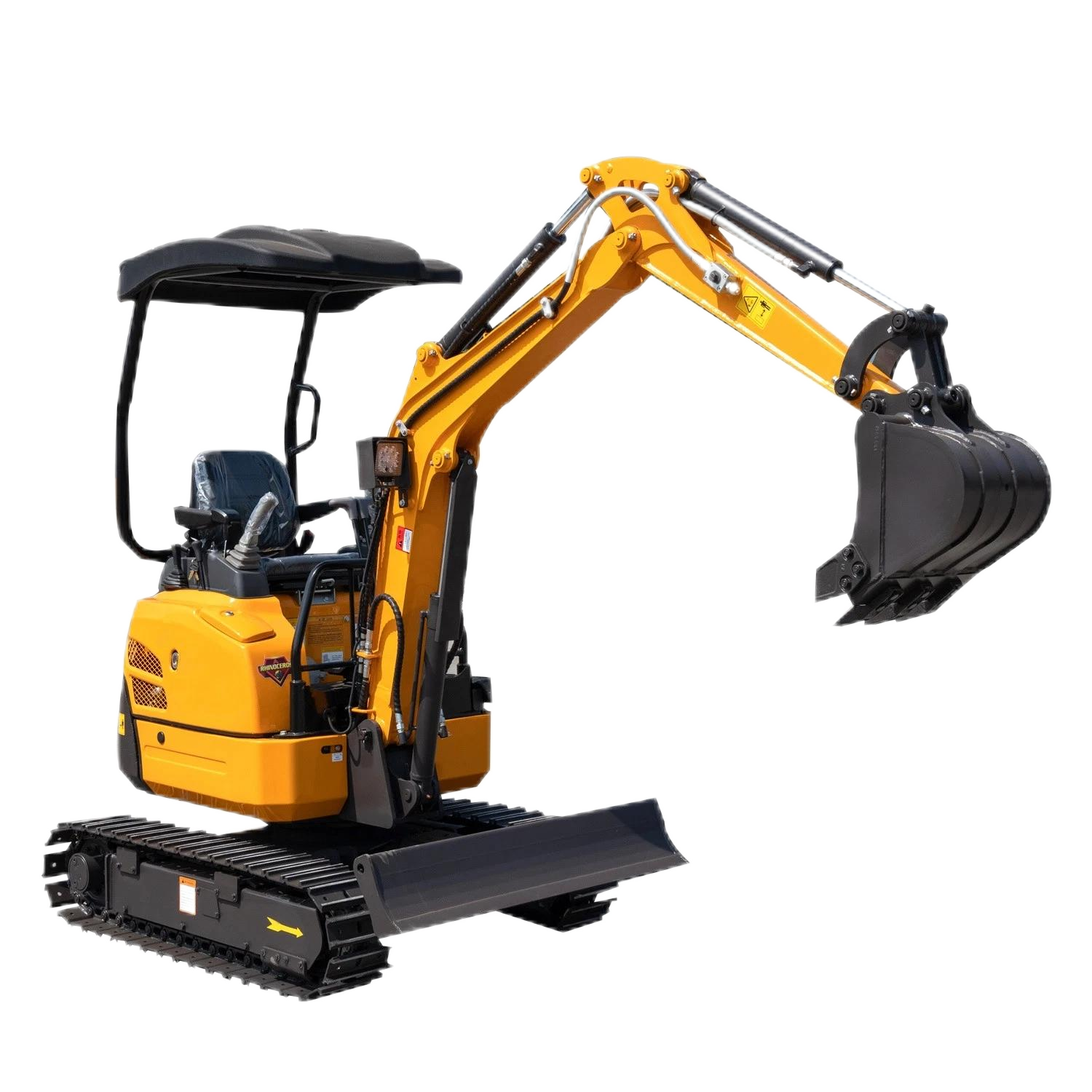The following is a detailed introduction to the 5-ton excavator:

Features
- Stronger working ability: Compared with the 4-ton excavator, the 5-ton excavator has improvements in aspects such as working weight and bucket capacity. It has stronger digging force and loading capacity, and can handle some more challenging excavation tasks, such as digging harder soil or breaking small stones.
- Good stability: The body weight of about 5 tons makes the excavator more stable during operation. Especially when performing excavation or slewing actions with greater force, it can maintain good balance, reduce shaking, and improve the accuracy and safety of operation.
- High operation comfort: It is usually equipped with a more spacious and comfortable cab. The seat is adjustable, the operation space is large, and the view is wide, which can effectively reduce the driver's fatigue and improve work efficiency. At the same time, the cab has good sound insulation and shock absorption effects, providing the driver with a relatively quiet and comfortable working environment.
- Convenient maintenance: The engine compartment is reasonably laid out, and all components are easily accessible, making it convenient for maintenance personnel to conduct daily inspections, maintenance, and repair work. This reduces maintenance costs and downtime, and improves the utilization rate of the equipment.
Performance Parameters
- Power system: Generally equipped with engines of well-known brands, such as Isuzu, Kubota, etc. The rated power is usually around 35 - 45kW, with strong power, which can provide sufficient power support for various actions of the excavator and ensure stable operation under different working conditions.
- Working weight: It is approximately 4500 - 5500kg. This weight design not only ensures the stability of the excavator but also does not cause too much difficulty in transportation. In most cases, it can be transported by an ordinary flatbed trailer.
- Bucket capacity: The bucket capacity is generally between 0.2 - 0.3m³. The larger bucket capacity allows for more soil to be excavated each time, effectively improving work efficiency in earthwork projects.
- Travel speed: The travel speed (high/low) is generally about 4 - 5km/h. It can flexibly switch between high and low speeds according to the actual operation scenario requirements, and can quickly reach the designated position when moving within the site, improving work efficiency.
- Slewing speed: The slewing speed is usually about 10 - 12rpm, which can complete the slewing action quickly, making the excavator more efficient during excavation, loading and other operation processes, and reducing operation time.
Application Scenarios
- Small-scale building construction: It can be used for the foundation excavation and foundation treatment of small buildings. It can operate flexibly within a limited construction site and complete various complex excavation tasks, laying a solid foundation for the construction of buildings.
- Rural construction: In rural areas, it can be used for projects such as building rural roads, digging irrigation wells, and constructing biogas digesters. Its moderate size and strong working ability can adapt to different terrains and construction conditions in rural areas, providing strong support for rural infrastructure construction.
- River dredging: It can carry out dredging operations in small rivers, ditches and other water areas. By replacing suitable buckets or dredging equipment, the silt, debris, etc. at the bottom of the river can be cleared out, improving the drainage and navigation capacity of the river and protecting the water environment.
- Small-scale mine mining: In some small mines, such as small quarries, clay mines, etc., the 5-ton excavator can be used for ore mining and loading work. It can travel and operate on narrow mine roads and working surfaces, and cooperate with other mining equipment to complete the excavation, loading and other links of the ore.





